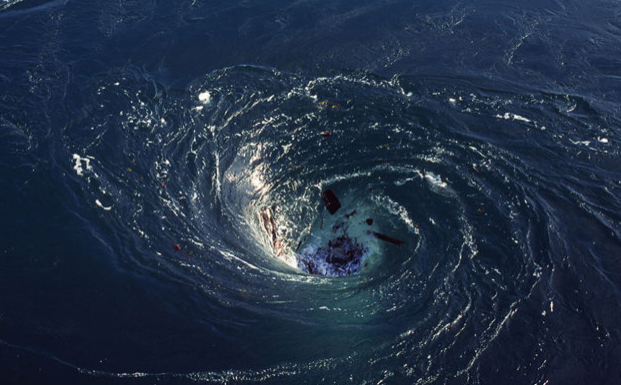What Are Oceanic Black Holes? Satellites Capture Powerful 'Black Hole' Whirlpools In The Atlantic Ocean

One of space's most powerful phenomena might have a distant cousin here on Earth.
Satellite images have recently revealed mysterious "black hole" whirlpools located in the South Atlantic Ocean. The massive and extremely powerful vortexes suck any floating debris into their openings, reports Yahoo UK.
Known as "maelstroms," these black holes have been spotted in the last three months by the physicists working on the study -- George Haller from the Swiss Federal Institute of Technology in Zürich and Francisco Beron-Vera at the University of Miami in Florida.
“We have found exceptionally coherent material belts in the South Atlantic, filled with analogues of photon spheres around black holes,” said Haller.
The vortices are "mathematical analogues" for black holes in space, basically saying that they do the same thing to water that black holes do to light. And to describe the whirlpools, the physicists use Edgar Allan Poe's 1841 story “A Descent into the Maelström,” reports Discovery News.
“The edge of the whirl was represented by a broad belt of gleaming spray; but no particle of this slipped into the mouth of the terrific funnel ... ”

According to the physicists, no liquid falls into the hole of the whirlpools as a spray circles around maelstrom.
In space, black holes function in a similar way. The holes are encircled by spheres of light in a area of gravity so strong -- due to the density of the black hole -- that the light travels in an orbit. It neither falls into the hole or can escape it.
To locate the whirlpools, the scientist analyzed satellite images of the Agulhas Current in the Indian Ocean, a current that travels along the east coast of Africa and then turns back on itself in a loop. Sometimes the loop separates and turns into whirlpools that can exist in the South Atlantic Ocean for more than three months.
The satellites imagery is designed to spot the aquatic equivalent of black hole type currents.
Since they exist as singular vortexes, the whirlpools “create moving oases for the marine food chain or even impact climate change through their long-range transport of salinity and temperature,” the study study. From debris to oil and trash, they will swallow anything entering their paths, allowing nothing to leak back out from the powerful spirals of water.
The depth of the maelstroms was also found to occur four times deeper than previously thought, with the study uncovering examples occurring as deep as 2000m below the ocean's surface.
© Copyright IBTimes 2025. All rights reserved.




















